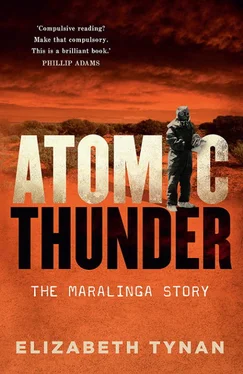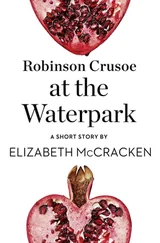(Kuli): September–November 1958
(Kuli): May–November 1959
(Kuli): April–October 1960
(Kuli/Naya): August 1961
(Kuli): March–April 1963
Rats
Maralinga, South Australia
(Naya): April–June 1958
(Naya): September–November 1958
(Dobo): March–July 1959
(Naya/Dobo): September 1960
Vixen A
Maralinga (Wewak), South Australia
June–August 1959
May–August 1960
March–April 1961
Vixen B
Maralinga (Taranaki), South Australia
September–October 1960
April–May 1961
March–April 1963
Alpha particles — Positively charged particles containing two protons and two neutrons that are emitted by certain radioisotopes, particularly those with a high atomic number.
Alpha radiation — Radiation caused by alpha particles. Alpha radiation has very little penetrating power but may present a serious hazard if alpha particles are inhaled or ingested.
Atom — The smallest particle of an element that retains the characteristics of that element. It is made up of a nucleus and a cloud of surrounding electrons.
Atomic number — The number and position of an element in the Periodic Table, equating to the number of protons in the nucleus.
Becquerel — The international standard unit of radioactivity, defined as one radioactive disintegration per second.
Beta radiation — Radiation caused by beta particles. Some radioactive elements emit from the nucleus charged particles of low mass called beta particles, which are identical to electrons. Beta radiation has medium penetrating power, between that of alpha and gamma radiation, and may be stopped by light metal such as aluminium.
Deterministic effect — The dose-dependent radioactive effect on a biological entity such as a human body. One kind of deterministic effect is radiation sickness, an often-fatal effect of exposure to a large dose of radioactivity.
D-notice — A secret government request to senior media representatives not to publish certain specified details about defence- or security-related activities. The D-notice system was adopted in Australia in 1952. D-notices were decided by the Defence, Press and Broadcasting Committee administered by the Department of Defence and made up of senior government and media representatives.
Dose — The amount of energy delivered to a mass of material by ionising radiation passing through it.
Dose equivalent — Different kinds of radiation, such as gamma or alpha, have different biological effects. For example, for the same absorbed dose, alpha radiation will produce more effects than gamma radiation. The dose equivalent is measured in sieverts.
Dosimeter — A device, instrument or system used to measure or evaluate a dose of radiation. Two types of personal dosimeters were used at Maralinga by personnel entering radiation areas during the tests: quartz fibre electrometers and film badges.
Fallout — The descent to the earth’s surface of particles contaminated with radioactivity, following the dispersion of radioactive material into the atmosphere by nuclear explosion. The term is applied both to the process and, in a collective sense, to the particulate matter.
Feather beds — Large metal frameworks used to hold the simulated warheads before detonation in the Vixen B safety trials held at the Taranaki firing pads at Maralinga.
Film badge — A plastic holder containing a piece of film similar to a dental x-ray film and worn by personnel at a nuclear test. Radiation exposes the film. After a nuclear test, the film is developed, and the degree of darkening apparent is a measure of the radiation dose received. The film holder usually contains metal filters to enable discrimination between different types of radiation.
Fission — The process in which the nucleus of a heavy element such as uranium or plutonium splits into two nuclei of lighter elements, accompanied by the release of substantial amounts of energy.
Forward area — The restricted zone within which the major bomb trials and minor radiological experiments took place at the British nuclear tests sites.
Fusion — The process in which the nuclei of light elements such as hydrogen (particulalry its isotopes deuterium or tritium) combine to form the nucleus of a heavier element, accompanied by the release of substantial amounts of energy.
Gamma radiation — Penetrating electromagnetic radiation emitted from the nucleus of radioactive elements. This form of radiation is most readily measured by monitoring equipment such as film badges and dosimeters.
Half-life — The time in which the activity of a radioactive species will decline to half its initial value by radioactive decay. For example, plutonium-239 has a half-life of 24 400 years, so it takes 24 400 years for half of its radioactivity to decay, then another 24 400 years for half of the remaining radiation to decay, and so on. The half-life of a radioactive species is a characteristic property of that species.
Health physics — The science of human health and radiation exposure – a branch of medical science devoted to radiation safety.
Ionising radiation — Radiation that integrates with matter to add electrons to or remove electrons from the atoms of the material absorbing it, producing electrically charged (positive or negative) atoms called ions.
Isotopes — Forms of the same element whose nuclei contain different numbers of neutrons and therefore have different mass numbers. Isotopes of an element have nearly identical chemical properties but differ in their nuclear properties. For instance, some isotopes of an element may be radioactive, and others not.
Major trials — Atomic tests conducted at Monte Bello Islands, Emu Field and Maralinga in Australia that involved detonating a complete atomic bomb, resulting in a mushroom cloud.
Minor trials — Hundreds of tests conducted at Emu Field and Maralinga in Australia that involved examining how radioactive materials and atomic weaponry would behave under various conditions such as fire or conventional explosion.
Neutron — A nuclear particle with no electric charge (neutral) and a mass approximately equal to or slightly greater than that of a proton. Neutrons are present in all atoms except those of the lightest isotope of hydrogen.
Nuclides — Species of atoms having a specified number of protons and neutrons in their nuclei. Radionuclides are the radioactive forms of nuclides. They are often expressed as, for example, 239Pu, which shows in numerical form the number of neutrons combined with the number of protons (in this case 145 neutrons and 94 protons) and hence the form of isotope.
Operation Brumby — A clean-up operation, more extensive than Operation Hercules, mounted by the AWRE at the Maralinga test range between April and July of 1967. Operation Brumby was considered by the AWRE to be the final clean-up before departing the atomic weapons test site permanently.
Operation Hercules — A clean-up operation mounted by the AWRE at the Maralinga test range between August and November 1964. This clean-up was intended as a temporary measure to allow a reduction in range staff to a care and maintenance level while long-term decisions were made about its future use.
Читать дальше












